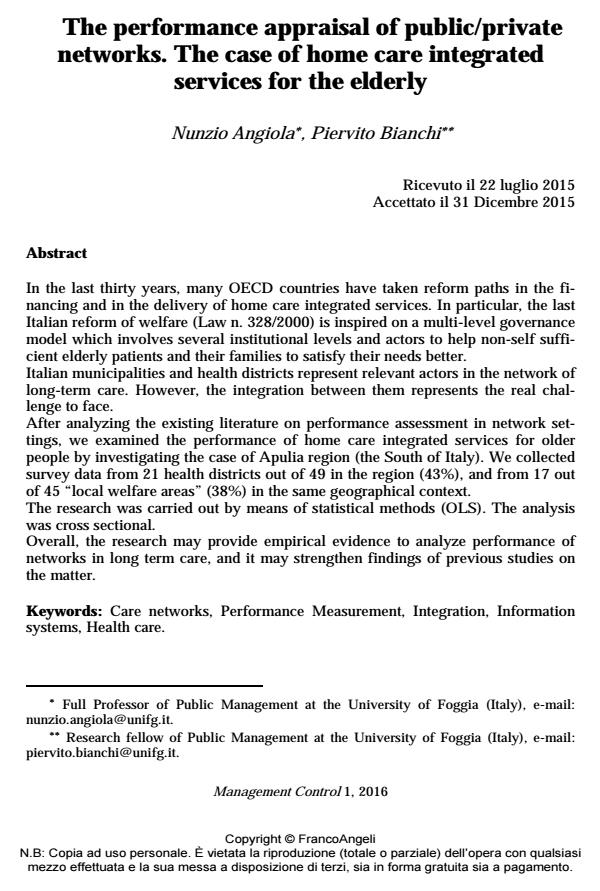The performance appraisal of public/private networks. The case of home care integrated services for the elderly
Titolo Rivista MANAGEMENT CONTROL
Autori/Curatori Nunzio Angiola, Piervito Bianchi
Anno di pubblicazione 2016 Fascicolo 2016/1
Lingua Inglese Numero pagine 12 P. 59-70 Dimensione file 64 KB
DOI 10.3280/MACO2016-001004
Il DOI è il codice a barre della proprietà intellettuale: per saperne di più
clicca qui
Qui sotto puoi vedere in anteprima la prima pagina di questo articolo.
Se questo articolo ti interessa, lo puoi acquistare (e scaricare in formato pdf) seguendo le facili indicazioni per acquistare il download credit. Acquista Download Credits per scaricare questo Articolo in formato PDF

FrancoAngeli è membro della Publishers International Linking Association, Inc (PILA)associazione indipendente e non profit per facilitare (attraverso i servizi tecnologici implementati da CrossRef.org) l’accesso degli studiosi ai contenuti digitali nelle pubblicazioni professionali e scientifiche
In the last thirty years, many OECD countries have taken reform paths in the financing and in the delivery of home care integrated services. In particular, the last Italian reform of welfare (Law n. 328/2000) is inspired on a multi-level governance model which involves several institutional levels and actors to help non-self sufficient elderly patients and their families to satisfy their needs better. Italian municipalities and health districts represent relevant actors in the network of long-term care. However, the integration between them represents the real challenge to face. After analyzing the existing literature on performance assessment in network settings, we examined the performance of home care integrated services for older people by investigating the case of Apulia region (the South of Italy). We collected survey data from 21 health districts out of 49 in the region (43%), and from 17 out of 45 "local welfare areas" (38%) in the same geographical context. The research was carried out by means of statistical methods (OLS). The analysis was cross sectional. Overall, the research may provide empirical evidence to analyze performance of networks in long term care, and it may strengthen findings of previous studies on the matter.
Parole chiave:Care networks, Performance Measurement, Integration, Information systems, Health care.
- La Network Governance a supporto dell'Open Innovation: un'analisi della letteratura Palmira Piedepalumbo, Concetta Metallo, Daniela Mancini, in MANAGEMENT CONTROL 3/2017 pp.79
DOI: 10.3280/MACO2017-003006
Nunzio Angiola, Piervito Bianchi, The performance appraisal of public/private networks. The case of home care integrated services for the elderly in "MANAGEMENT CONTROL" 1/2016, pp 59-70, DOI: 10.3280/MACO2016-001004